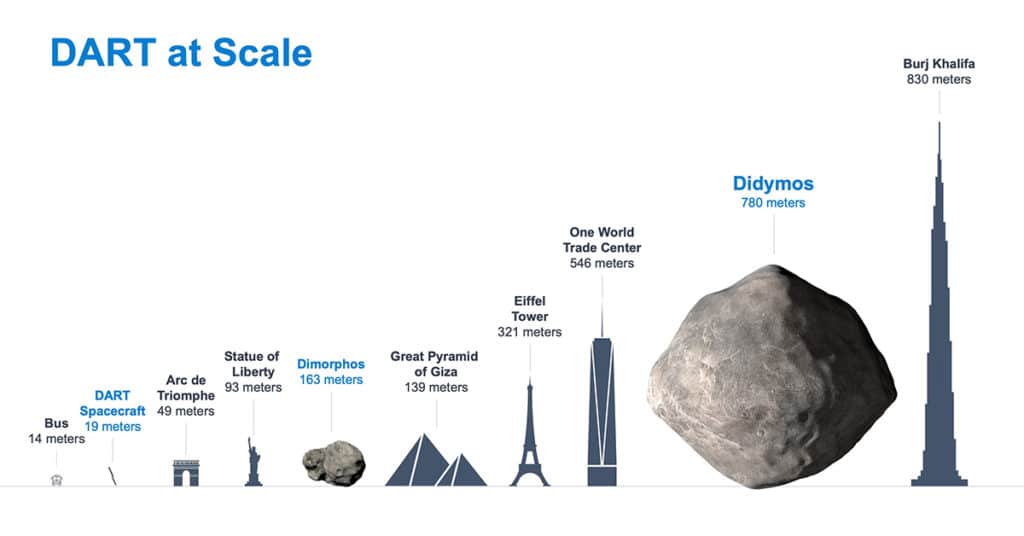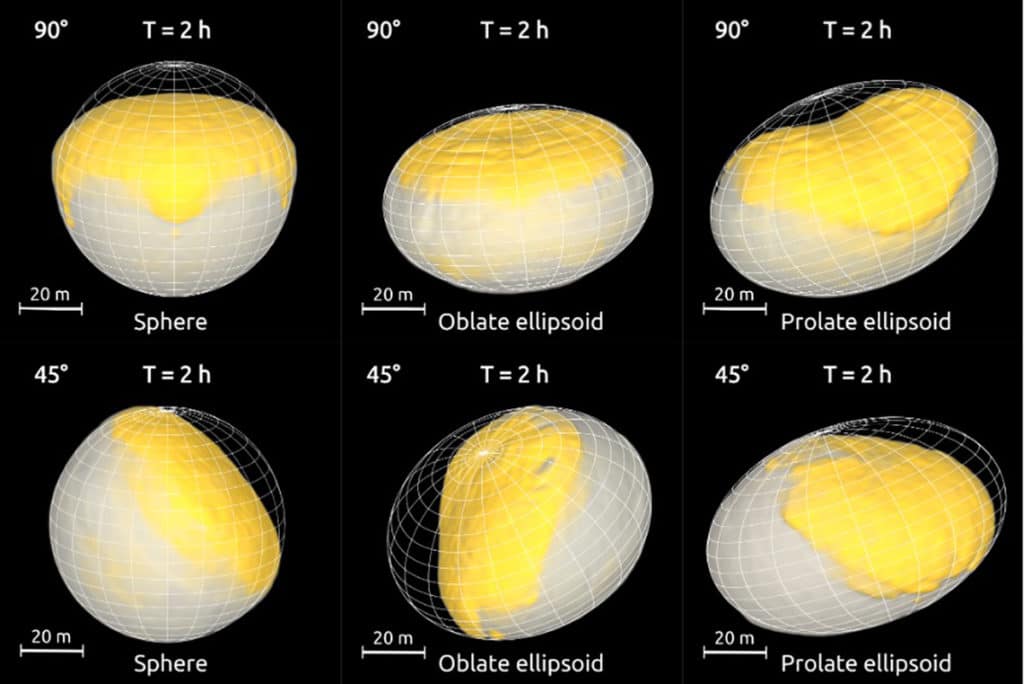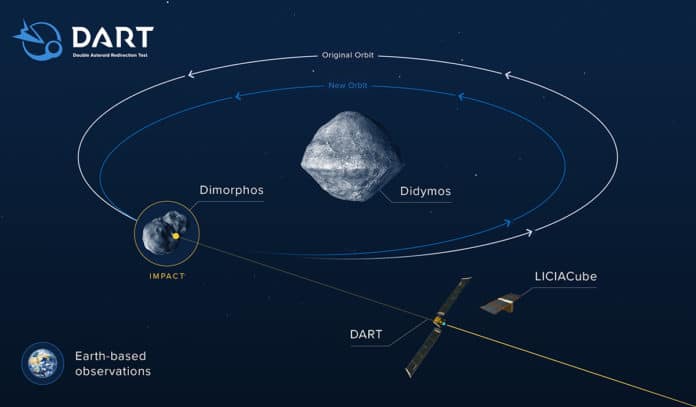A giant asteroid’s impact is considered the likely cause of the mass extinction of the dinosaurs almost 66 million years ago.
While there is no potential harm from an asteroid on the Earth at present, it is still important to keep our defense system ready in order to prevent catastrophic consequences such as impacts by deflecting trajectories of asteroids if one is ever discovered.
With this aim, NASA launched the Double Asteroid Redirection Test (DART) mission, the world’s first planetary defense test mission, last November. DART is the first-ever mission dedicated to investigating and demonstrating one method of asteroid deflection by changing an asteroid’s motion in space through kinetic impact. In summary, it is to collide with an asteroid and deflect it from its orbit in order to provide valuable information for the development of such a planetary defense system.
The fraction of the asteroid population that has survived since the formation of the solar system has experienced numerous collisional, dynamical, and thermal events that have shaped their structures and orbital properties.
Due to the inability to recreate impact conditions in laboratory experiments, the observed regime of low-gravity, low-strength impacts has remained largely unexplored so far. In addition, the very large timescales involved in the crater growth (more than a few hours in the case of DART) have made it impossible to numerically simulate these impact processes up to now.
In a new study published in The Planetary Science Journal, researchers of the University of Bern and the National Centre of Competence in Research (NCCR) PlanetS have simulated this impact with a new method. Their results indicate that it may deform its target far more severely than previously thought.

“Studying this yet to be understood cratering regime is not only important in the context of deflecting future threatening asteroids, it is also crucial for determining the lifetime of the overall asteroid shapes and surface ages.” Study mentions.
Recently, the artificial impact experiment of JAXA’s Hayabusa2 mission on the surface of asteroid Ryugu created a crater that was about 14 m in diameter. This unexpectedly large crater suggests that at least the near surface of the asteroid is controlled to a large extent by its weak gravity rather than strength.
These missions demonstrated that an asteroid could have a very loose internal structure. This structure is held together by gravitational interactions and a small cohesive force. It resembles a pile of rubble.
But, earlier simulations of the DART mission impact assumed a solid interior of its asteroid target Dimorphos.
“This could drastically change the outcome of the collision of DART and Dimorphos, which is scheduled to take place in the coming September, “study lead-author Sabina Raducan from the Institute of Physics and the National Centre of Competence in Research PlanetS points out.
Instead of leaving a relatively small crater on the 160-meter wide asteroid, DART’s impact at a speed of around 24’000 km/h could completely deform Dimorphos. The asteroid could also be deflected much more strongly, and larger amounts of material could be ejected from the impact than the previous estimates predicted.
In a novel approach that takes the propagation of the shock waves, the compaction, and the subsequent flow of material into account, researchers were, for the first time, able to model the entire cratering process resulting from impacts on small asteroids like Dimorphos.

For this approach researcher, Sabina Raducan was awarded by ESA and by the mayor of Nice at a workshop on the DART follow-up mission HERA.
In 2024, the European Space Agency ESA will send a space probe to Dimorphos as part of the space mission HERA. The aim is to visually investigate the aftermath of the DART probe impact.
According to researchers, having a good understanding of potential outcomes of the DART impact could help them to get most of the HERA mission.
“Our work on the impact simulations adds an important potential scenario that requires us to widen our expectations in this regard. This is not only relevant in the context of planetary defense, but also adds an important piece to the puzzle of our understanding of asteroids in general,” study co-author Martin Jutzi from the Institute of Physics and the National Centre of Competence in Research PlanetSconcludes.
Journal Reference
- Sabina D. Raducan and Martin Jutzi. Global-scale Reshaping and Resurfacing of Asteroids by Small-scale Impacts, with Applications to the DART and Hera Missions. The Planetary Science Journal, Volume 3, Number 6. DOI: 10.3847/PSJ/ac67a7
